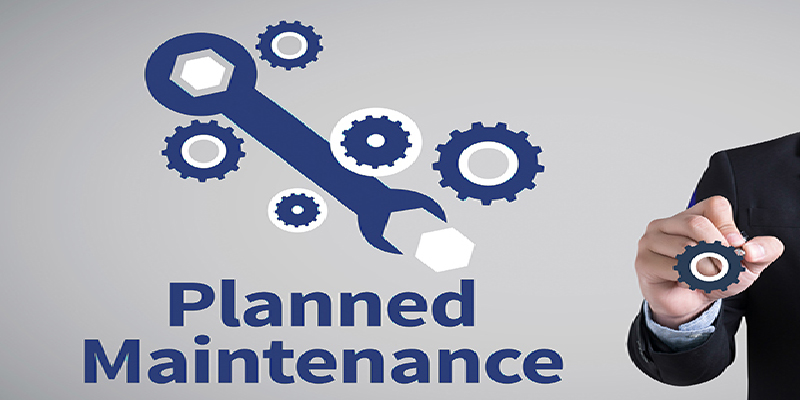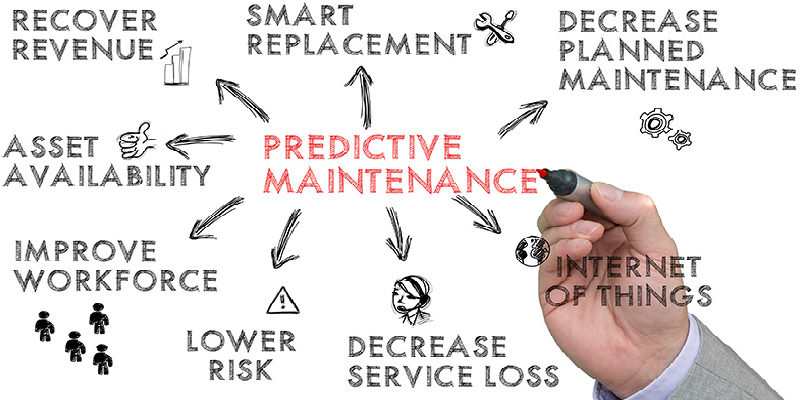How Can You Streamline Your Planned Maintenance Via Digital Auditing

August 10 , 2023
For a well-active business operation, it’s essential to have effective and reliable planned maintenance. Robust planned maintenance reduces downtime, improves machine performance, and keeps the workplace safe. But handling maintenance tasks by hand can take a lot of time, lead to mistakes, and be hard to keep track of. This is where the strength of digital audit shows.
You can change your planned maintenance strategy with the right tools, like UrAudits’ auditing application that you can access through a website or an app. Let’s look at how our digital audit solution can improve your maintenance procedures and make the inspection process more accessible.
What is Planned Maintenance?

Planned maintenance of equipment and assets, also called planned preventive maintenance, or PPM for short, aims to reduce unexpected downtime and quickly get things back to normal after a failure. It is necessary to follow a set schedule and known maintenance methods.
Maintaining your systems and tools is essential to avoid expensive repairs and breakdowns that you didn’t plan for. If you plan your maintenance, you can protect your investments and ensure they last long and work well as possible. Monitoring and caring for your machines and systems is crucial to ensure they run well.
Five Different Kinds of Planned Maintenance
Predictive maintenance

Predictive maintenance uses sensors and condition monitoring methods to track equipment parameters. They look at real-time data to find and predict possible breakdowns or changes in performance. Organizations can better plan maintenance jobs by looking at trends and patterns in the data. They can get the most use out of their equipment and cut down on unnecessary maintenance.
Preventive Maintenance
Preventive maintenance ensures equipment reliability by actively checking, fixing, and rebuilding it in a planned manner. This process follows specific schedules, usage thresholds, or manufacturer’s instructions. It includes routine tasks such as lubrication, filter changes, cleaning, calibrations, and visual inspections to maintain equipment functionality proactively. Preventive maintenance ensures that technology works well and lasts as long as possible by looking for minor problems and fixing them before they worsen.
Corrective Maintenance

Corrective maintenance, also known as “breakdown maintenance,” is typically performed in response to issues with equipment. However, it may still be partially scheduled. When something goes wrong with a piece of machinery, the repair crew works quickly to get it back up and running. Even though this kind of planned repair aims to cut downtime, it’s not the best option for businesses because it could lead to higher costs and operational interruptions. The proactive approach to repair is better.
Condition-based maintenance, or CBM

Condition-based maintenance aims to track how healthy equipment is doing by using specific metrics to determine what kind of care it needs. It involves regular tests like oil analysis, thermography, shaking analysis, and sound measurements. CBM optimizes maintenance efficiency and minimizes downtime by performing maintenance only when specific conditions are met, which increases maintenance speed and cuts downtime. This approach speeds up maintenance and closely monitors essential equipment indicators.
Reactive Maintenance
Reactive maintenance, also called breakdown or run-to-failure maintenance, only occurs in equipment after it has broken down and needs repair or maintenance. Reactive maintenance is a straightforward approach that doesn’t involve proactive inspections or preventive measures. It relies solely on responding to equipment failures as they happen rather than taking preemptive action to prevent breakdowns.
The five planned maintenance types mentioned earlier are strategies companies can use for conducting equipment inspections, testing, and services.
What Are The Pros And Cons Of Planned Maintenance?
While planned maintenance may have some drawbacks, its benefits outweigh them. Businesses must design and customize maintenance approaches to balance dependability, cost-effectiveness, and operating efficiency. This indicates the maintenance program needs monitoring and regular changes to ensure it meets the organization’s goals and the changing needs of the business.
Benefits Of Planned Maintenance
- Improving Equipment Reliability: Regular repair can extend the life of equipment, cut down on downtime, and stop problems from happening. It can also make people more productive.
- Cost savings: Regular maintenance can help groups save money by keeping minor problems from worsening and costing more. It can also help machines use less energy, which cuts the costs of running them.
- Enhances Workplace Safety: Regular checks and maintenance help find and fix safety problems that could lead to accidents or injuries. This proactive approach makes sure that employees work in a safe place and reduces the chances of expensive lawsuits.
- Compliance with regulations: Businesses actively ensure their tools are in good working order through planned maintenance to comply with regulations. This involves regular checking and fixing of equipment to meet regulatory requirements.
Drawbacks of Planned Maintenance
- Starting Costs: Creating a reliable repair program requires investing in people, training, tools, and software. Even though it might be hard for small businesses with limited funds, it will help them save money in the long run.
- Skills and knowledge needed: For maintenance to be effective, experts with the proper knowledge actively perform inspections, diagnoses, and fixes. Their expertise ensures accurate assessments and successful maintenance outcomes. Even though it’s essential, it’s hard for businesses to find and keep skilled specialists, especially in fields requiring a lot of training.
- Interruptions to Operations: Scheduled repairs can actively disrupt daily operations, mainly when equipment requires downtime for maintenance. This can impact the smooth flow of operations and require careful planning to minimize the impact on productivity. Businesses must plan their repair schedules carefully and have backup systems or other ways to ensure production isn’t too much affected.
- Adjusting for operational needs: Regularly reviewing and changing maintenance plans can be expensive and time-consuming to keep up with operational needs, production schedules, and asset importance. If you don’t get upgrades, you might end up with old maintenance methods that don’t work well.
The Five Steps to Planned Maintenance
Some businesses need help to develop an effective scheduled repair plan, but keeping equipment in good shape for maximum productivity, dependability, and value is essential. You can make ongoing planned maintenance with the help of the five steps below:
Asset Identification
Find and organize your assets so you can take care of them quickly. You can determine how vital each asset is by examining how it affects business, safety, and cost. Put things in order of how important they are to make a maintenance hierarchy.
Maintenance Plan
Make a strict repair plan to ensure your assets last as long as possible. This means keeping in mind the rules, business standards, and instructions from the manufacturer. Next, list the jobs and activities for maintenance, and then decide how often to accomplish them based on all these factors.
Establish Priorities
In this step, often called the maintenance plan, the order of maintenance tasks is set. When deciding which maintenance jobs are most important, you should look at operational needs, output schedules, and the availability of resources.
Implementation
Use qualified maintenance workers to do the planned maintenance tasks according to their importance. Giving these experts the tools, materials, and equipment they need to do their jobs safely and effectively while sticking to the maintenance plan is essential.
Document and Review
With planned maintenance software, you can actively track all the necessary repairs. It lets you keep records of who performed the job, the completion date, and any relevant notes or results. Additionally, it ensures that all paperwork for assets with a maintenance history is up-to-date, including information about repairs, dates, and part replacements.
Evaluate the effectiveness of maintenance activities by conducting a comprehensive analysis of key performance indicators (KPIs). These KPIs include equipment uptime, mean time between failures (MTBF), and maintenance costs.
After gathering, reviewing, and analyzing the necessary data, actively identify areas for improvement in repair plans and schedules. Make the appropriate changes to ensure optimal performance and effectiveness.
Execute a Secure Planned Maintenance Setup Via UrAudits
You can ensure adherence to your preventive maintenance plans by actively utilizing preventive maintenance tools. Select the best-planned maintenance software to assist you in this process, streamlining your workflow and reducing paperwork and administrative burdens.
Many tasks your staff perform manually during equipment, but with the help of our complete preventative maintenance software, you can perform the inspection automatically.
- Streamline data collection in the field with smart forms for easy accessibility.
- Generate instant reports to share audit information, quickly identifying non-conformances and critical issues.
- Utilize intelligent dashboards for real-time analysis of data.
- Assign corrective actions to specific team members, whether internal or external.
- Access a wide range of customizable audit checklist templates for a prompt start.
Your company and outside auditors will always be able to find information about how to perform your maintenance checks well.
What is the best? You can do the whole process automatically. With this plan, you can be sure that your planned maintenance checks will go smoothly, and you’ll get the best results quickly.
Conclusion
The digitalization of planned maintenance has given business inspections and audits a new way.
Organizations can speed up their maintenance processes using sophisticated technology like an auditor app for Android or an inspection app for iOS that you can download from your smartphone. Firms can ensure they align with regulatory standards and improve their working efficiency.
With our digital audit app, you can have real-time data collection, prompt reporting, intelligent dashboards, corrective action management, and a large pool of customizable templates. Our auditing application allows companies to use preventive maintenance, reduce downtime, and improve the performance of their equipment.
So, download our software and embrace the future of planned maintenance via audit inspection from a website or a mobile. And get the benefits of efficiency, accuracy, and cost savings.
Copyright © 2024 Uraudits.com. All Rights Reserved. Privacy Policy | Legal | Terms of Use
Privacy Overview
| Cookie | Duration | Description |
|---|---|---|
| cookielawinfo-checbox-analytics | 11 months | This cookie is set by GDPR Cookie Consent plugin. The cookie is used to store the user consent for the cookies in the category "Analytics". |
| cookielawinfo-checbox-functional | 11 months | The cookie is set by GDPR cookie consent to record the user consent for the cookies in the category "Functional". |
| cookielawinfo-checbox-others | 11 months | This cookie is set by GDPR Cookie Consent plugin. The cookie is used to store the user consent for the cookies in the category "Other. |
| cookielawinfo-checkbox-necessary | 11 months | This cookie is set by GDPR Cookie Consent plugin. The cookies is used to store the user consent for the cookies in the category "Necessary". |
| cookielawinfo-checkbox-performance | 11 months | This cookie is set by GDPR Cookie Consent plugin. The cookie is used to store the user consent for the cookies in the category "Performance". |
| viewed_cookie_policy | 11 months | The cookie is set by the GDPR Cookie Consent plugin and is used to store whether or not user has consented to the use of cookies. It does not store any personal data. |









